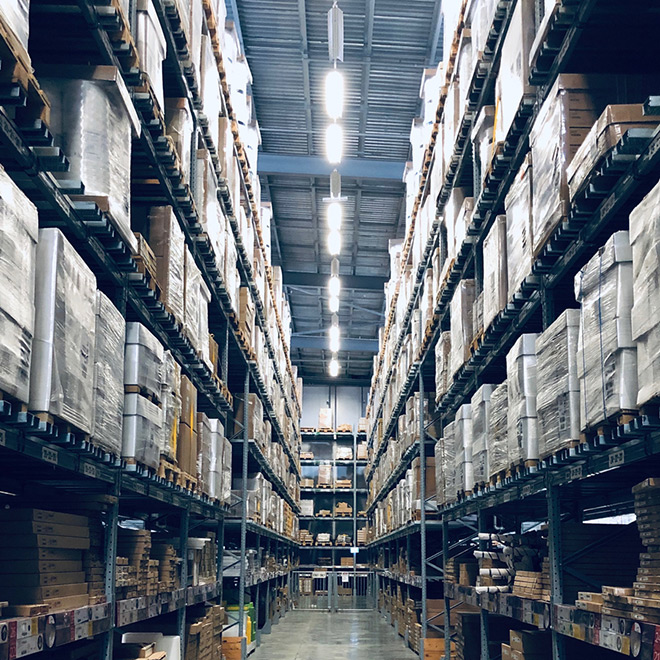
Stores as Fulfillment Centers
Elevating Retail in the Digital Era with Innovative Strategies
Over the past decade, we have watched companies fight tooth and nail for their survival amid the industry’s metamorphic digital revolution. The retail apocalypse is raging on more aggressively than ever, and previously dominant brands are now suffering from losses that are forcing them to abandon hundreds of their brick-and-mortar locations. With approximately 5,000 store closures in 2018 and over 15 retail retailers in the United States filing for bankruptcy, the retail landscape is undergoing a profound transformation.1
Ecommerce is now the reigning retail royalty, shuttering shopping centers and department stores faster than you can say “two-day Prime shipping.” With this sector of the market expanding at such a rapid rate, big box retailers and ecommerce companies are exploring innovative approaches to stay relevant in this evolving industry.

No one in 2004 would have looked at the shopping mall as something to be pushed into obscurity; you likely would’ve been too busy shopping at Elder-Beerman or browsing the newest selection at Blockbuster (RIP), scoffing at the idea of buying apparel or renting movies from home on Amazon.com. But 15 years later, these once bustling retail hubs are now harboring thousands of square feet of unused space that is up for the taking. And who is vying for this real estate? Companies prioritizing (and expanding) ecommerce.
Retailers are actively pursuing these spaces, recognizing the potential for centralized distribution centers. Industrial property availability has hit a 20-year low at 7%, while demand for these spaces outpaced supply by 29 million square feet in 2018.2 Despite zoning roadblocks, retail properties, especially those in close proximity to population centers, offer ideal locations for warehouse space. The vase spaces left behind by department stores in malls, averaging around 250,000 square feet, present valuable opportunities for companies seeking warehouse solutions. To put the value of this into perspective, Wall Street has concluded that Macy’s real estate is worth twice the amount of the company at around $16 billion.3

Amazon, a key player in reshaping the retail industry, is acquiring former shopping malls to strategically position fulfillment centers across the United States. This not only strengthens their competition with brick-and-mortar retailers but also improves delivery speed and supply chain efficiency. Ohio is at the forefront of this trend, and ecommerce continues to redefine the retail landscape, the conversion of stores into distribution centers is poised to grow.
Seeing how Amazon is utilizing this tactic to expand their already dominant reach, what can competitors do in order to keep up? The easiest and possibly most obvious solution is to turn portions of their stores into mini distribution centers. Walmart, for example, has over 4,500 supercenters sprinkled across the United States with a majority of them mainly serving one purpose: to provide those who come directly into the store with merchandise.4 BOPIS is a popular fulfillment option offered by many of these big box retailers, but it is only the tip of the iceberg in terms of the opportunities that their physical locations provide when it comes to getting products in the hands of consumers.

To put it bluntly, the back of the house in these facilities needs an extensive reorganization. This portion of stores hasn’t been truly updated since the ’90s, and a change in supply chain is essential in the battle against the successful variety of online shipping methods. 90% of consumers say that free or reduced shipping costs are a hugely important factor when it comes to making online purchases.5 So much so that more than 80% said that they have decided to cancel a purchase and seek out other options on account of unfavorable shipping costs.5 Turning these stores into partial distribution centers not only streamlines the shipping process but also enhances brand loyalty by delivering products faster.
The inventory and consumer data is already available, the space is already there, and the existing employees can easily transition from associates to stockers. So why haven’t more companies implemented this mini fulfillment center strategy? Concerns about its effectiveness and ROI are likely the most halting reasons. No one wants to be the one to try something and fail, becoming the cautionary tale of what not to do in the industry for years to come. Target, though, has already taken this leap of faith and is happily reaping the benefits. Brian Cornell, Target’s CEO, feels that the transformation is, “placing our stores at the center of a modern network design to deliver an unmatched combination of convenient fulfillment options.”6

They are basically using their stores to cater to all aspects of fulfillment, whether it is through a traditional store trip, a drive-up order, an in-store pickup order, or a traditional ecommerce purchase.
Walmart is another retail giant making strides in this direction, prioritizing innovative strategies like BOPIS, ship-from-store, and ecommerce offerings. Their BOPIS, ship-from-store and ecommerce offerings are consumer favorites in addition to their free two-day shipping option that requires no outrageous membership fees. The dedication to training employees for streamlined fulfillment processes positions them as top players in the retail industry.
Other companies are also recognizing the importance of this concept, rapidly implementing fulfillment options to meet digital demands and reduce shipping costs. Kohls, for example, has equipped over 130 stores with this fulfillment option this year in order to keep up with digital demands and cut shipping costs. At this time last year, only ten of their stores offered this service.1 To compete with ecommerce giants, retailers must offer consumers diverse fulfillment options, allowing for flexibility in receiving and returning items.
To successfully continue on with their battle against Amazon’s market wrath, retailers need to take note of the efforts of Kohls’ and Target that allow shoppers true freedom when it comes to receiving and returning their items. With ecommerce giants’ seemingly endless fulfillment offerings setting them apart from the crowd, big boxers may as well join in on the fun and cater to all of consumer’s most desired ordering and receiving methods right in the stores they began in. Without taking swift and deliberate measures, the glut of open space brought on by the retail apocalypse will continue on its merry (and debilitating) path.
Thankfully, WD has the knowhow to make sure your business doesn't fall victim to this retail revolution. We have already aided Walmart in their efforts to become more fulfillment oriented by providing our full range of services spanning from conducting shopper research, to creating imaginative store designs and digital shopping experiences, and the development of detailed architectural designs and engineering plans for new stores, remodels and retrofits. To learn how your business can implement these practices and improve your fulfillment strategy, contact us here.

 Joanne Heyob
Joanne Heyob


